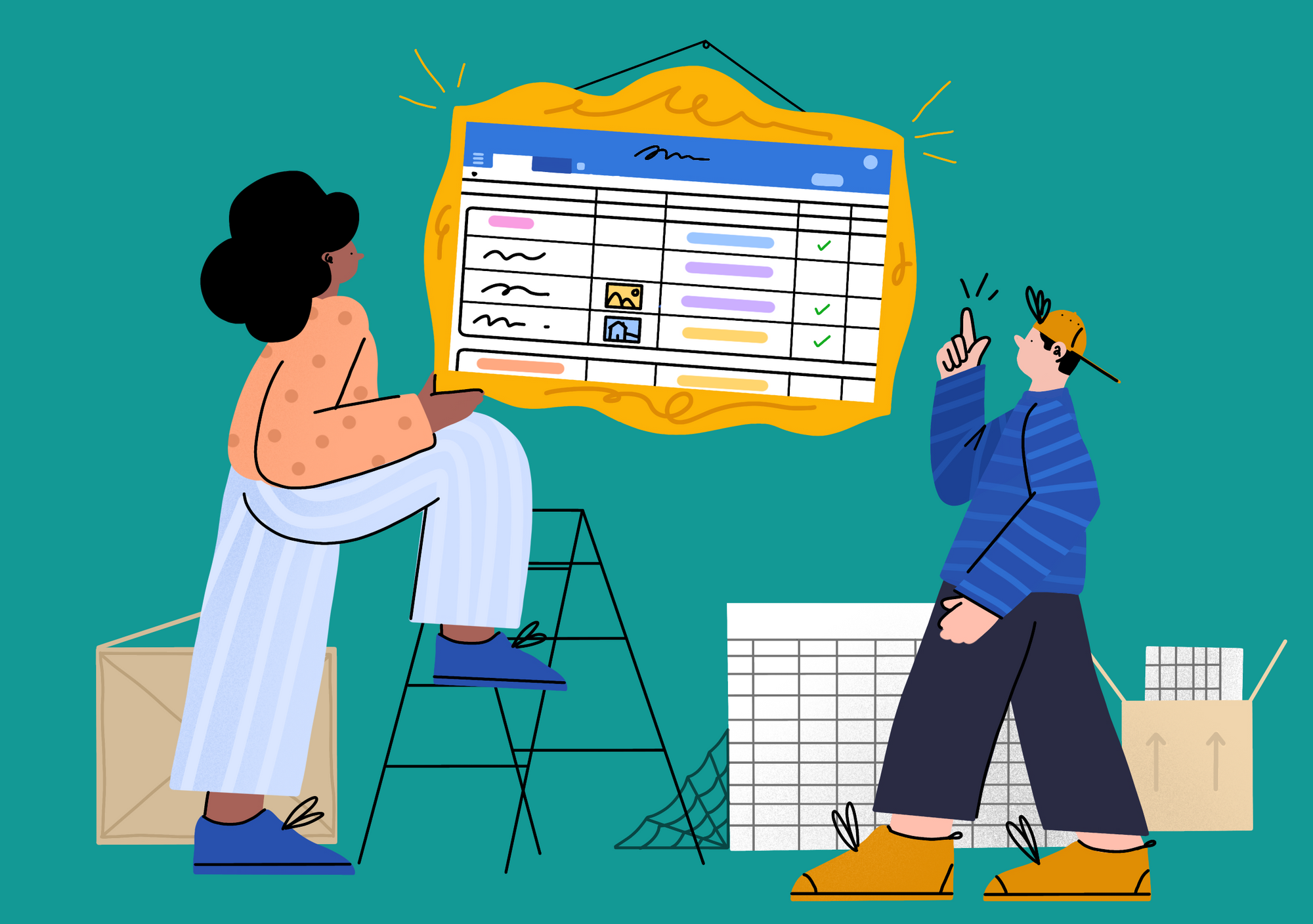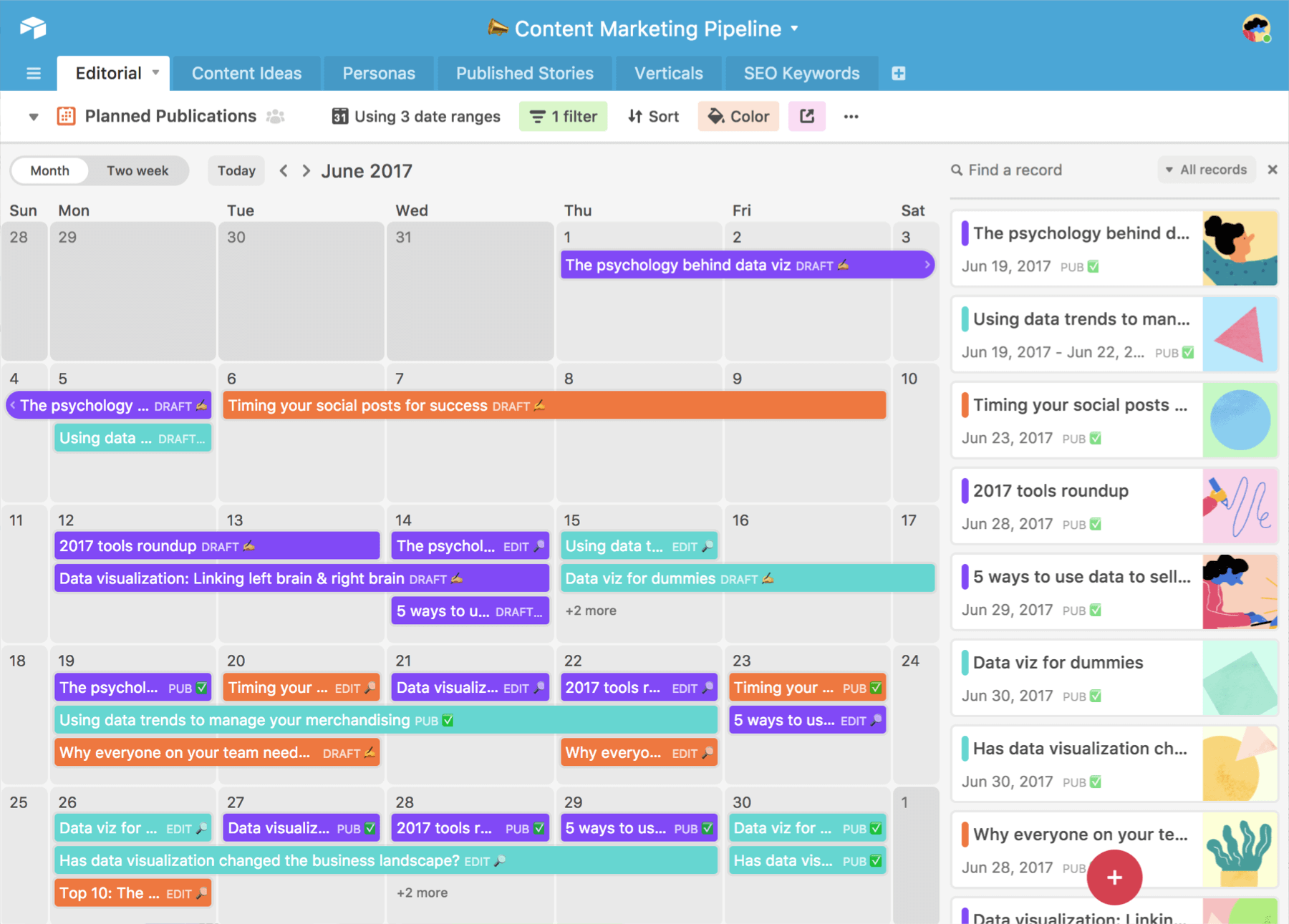

Is it another version of Microsoft Excel? Or Google Sheets? Or Google sheets crm template? No. Both are powerful modular productivity powerhouse and have their own pros and cons.At first glance, Airtable is a spreadsheet.
AIRTABLE BLOCKS HOW TO
How to choose? If you are still confused, try each one for a few days and see which one you find more intuitive, more flexible, easier to use, and meets your particular requirements. They can both handle teams and support a number of templates and input styles. But essentially, one works as a doc to manage knowledgebase while the other works like a database or sheet to manage it. Airtable is Google Sheets on steroid where again, you can enter data in a variety of formats. Notion is Google Docs on steroids where you can enter data in a variety of formats.
AIRTABLE BLOCKS FOR MAC
Enterprise plan unlocks admin controls but the price will depend on your negotiation skills and team size.Īlso Read: 5 Best Time Tracking Apps for Mac to Boost Your Productivity Notion vs.
AIRTABLE BLOCKS PRO
For $20 in Pro plan, you unlock blocks feature plus styling options, password sharing. Plus plan will cost $10 but simply increase various limits.
AIRTABLE BLOCKS FREE
The free plan restricts records to 1200 and file attachment size to 2GB but includes revision history to two weeks. Difference? For enterprise plan, you get SAML SSO, dedicated manager, and unlimited version history.Īirtable is also available on all popular platforms on both desktop and mobile like Android, iOS, Windows, and macOS. After that, it will cost you $4 for individuals, $8 per member for teams, and $20 per member for enterprise. All the features are completely free in Notion for up to 1000 blocks. There are extensions for popular browsers. Notion is available on the web, Android, iOS, Windows, and macOS. On the plus side, you can connect with Salesforce, Trello, and HubSpot among other apps to query data.Īlso Read: Best Airtable Alternatives for Collaboration and Project Management 3. Heck, it is not suitable for taking notes like we do in Evernote and OneNote. You can’t create wikis or write articles. An easy way to track whats happening across the board, who is working on what, and where do you, as a team stand.īecause Airtable functions like a spreadsheet with rows and columns, it is not suitable for writing long form content or text based notes. This gives you more flexibility and when you tag team members, you can assign roles and responsibilities to them, and check items off as they are taken care of. Notion acts as an online modular document where you can create and capture data in a variety of formats like todo lists, wikis, articles, boards, and even calendars. It’s more suitable for creating Kanban boards, writing articles or creating an entire wiki, and to-do lists. Sure, you can also create spreadsheets, tag people, pull in data using Zapier like in Airtable, but that’s not its key strength. Notion is more about creating a hub of knowledge or a knowledgebase. For example, contacts and emails from marketing campaigns. This makes Airtable more suitable for people working in a CRM environment where you have data incoming in variety of formats or sources. This is how Airtable functions, as a relational database where every piece of data is related to something or someone else. You can also add blocks from the sidebar menu as we saw earlier. In the example below, you will see multiple sheets open in different tabs, with the option to manipulate that data by different variables. Airtable is database driven where you will be working with a spreadsheet for managing data from different sources. This is probably the single biggest difference between these two modular productivity suite. Each base has columns and each column can hold data like text, attachments, and so on.

Like notion, you can create boards, calendars, and other areas to capture information.


A base works like a database or a spreadsheet where again, you can input data in a number of formats and manipulate it however you like. Think of Airtable, a big database where everything works inside a base. You can move it, link to it, delete it, and so on. Every information you enter forms a block and then you can manipulate that block however you want. in a variety of ways like boards, sheets, calendars, notes, todos, and so on. A block is an area to enter data in a variety of formats like text, image, videos, links, etc. Think of Notion, as powerful Evernote where everything works in blocks. Also Read: Top 10 Speech To Text Apps For Transcribing Notes, Meetings and Lectures Notion vs.


 0 kommentar(er)
0 kommentar(er)
